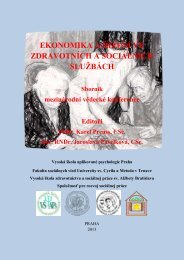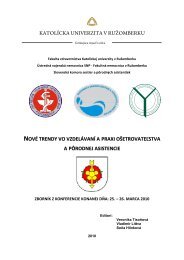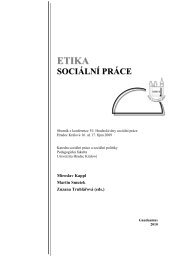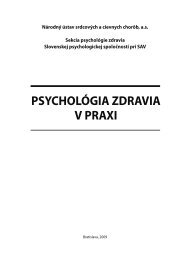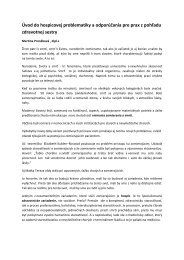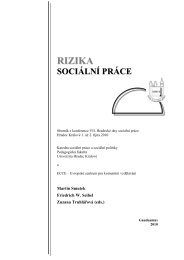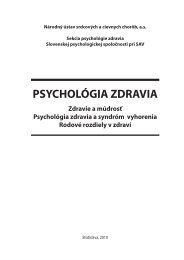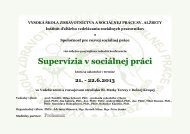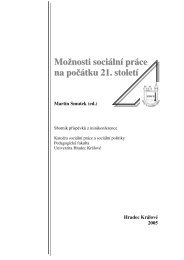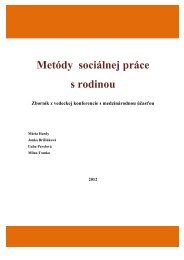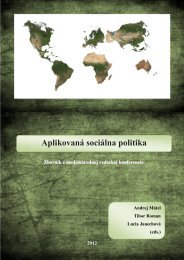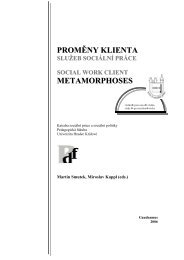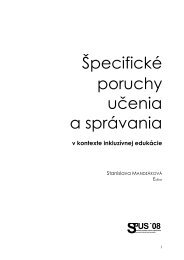Zmena klÃmy â možný dopad (nielen) na obyvateľstvo - Prohuman
Zmena klÃmy â možný dopad (nielen) na obyvateľstvo - Prohuman
Zmena klÃmy â možný dopad (nielen) na obyvateľstvo - Prohuman
You also want an ePaper? Increase the reach of your titles
YUMPU automatically turns print PDFs into web optimized ePapers that Google loves.
which young children should engage with issues of justice at both an immediate<br />
and global level.<br />
Methodology: Developing a Global Justice Programme<br />
The early childhood global citizenship programme, the subject of this paper, was<br />
developed through an extensive research process. Research was conducted in<br />
three phases with the purpose of informing and testing strategies for integrating<br />
global justice education into preschool and infant class settings.2 Between each<br />
research phase, a resource development team engaged in critical reflection on the<br />
results of the research and in the development of further materials for the next<br />
phase, ultimately resulting in the fi<strong>na</strong>l education programme. During the later<br />
stages of the process the resource development team was advised by educatio<strong>na</strong>lists<br />
with different specialisms relating to early childhood education.<br />
Research Phase One:<br />
Young Children’s Engagement with Issues of Global Justice<br />
The first phase of the research had the primary objective of identifying how<br />
young children engage with issues of global justice. The research was undertaken<br />
in three settings: a pre-school class, a Junior Infant class and a Senior Infant<br />
class. Each setting was in a different social context at different locations around<br />
Ireland.<br />
The research was undertaken over a four week period. It involved a total of sixty<br />
children and four participating teachers. The research approach taken was qualitative,<br />
informed by the ‘mosaic’ approach (Clark and Moss, 2001) and drawn from<br />
existing classroom practices. The principal strategy used was adult-child interaction<br />
through dialogue. It involved observation and recording of children’s engagement<br />
with materials presented by the teacher, and small group work facilitated by<br />
the researcher using Thinking Time/Circle Time, story, drama and the exploration<br />
of images. The educators were asked to give feedback on their own thoughts<br />
on the lessons and on the discussion with the children. The educators were also<br />
asked to note any impacts or talking points relating to the research topic which<br />
arose from the children in the days between each visit. Provision was also made<br />
for a follow-up interview with the participating educators.<br />
As with all research involving young children, ethical issues relating to participants’<br />
consent, participation and beneficence arose here. Extensive efforts<br />
were made to communicate the purpose and the <strong>na</strong>ture of the research to all<br />
168




